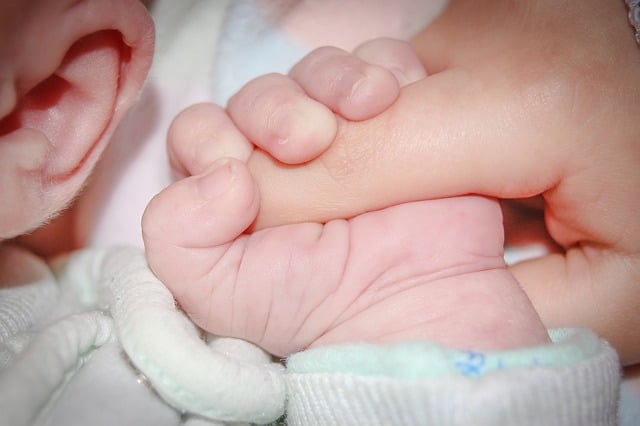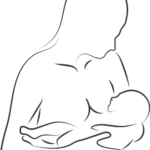image credit to India Times
Your 3-Week-Old Baby’s Milestones & Development By 3 weeks, most parents are starting to feel like they’re getting into the groove of caring for their newborn. They understand better what their baby needs, admire how good their baby smells, and are adjusting to the lifestyle of parenting an infant—exhaustion and all!
Your baby is becoming more alert and is beginning to feel like a little person. Along with that heightened alertness, though, comes more intense periods of fussiness, which could be signs of colic.
Here’s what you need to know about parenting a 3-week-old baby: the milestones to look forward to, some care and safety tips to keep in mind, and what to expect when it comes to feeding and sleep.
At This Age
- Development: Your baby becomes aware of their surroundings and establishes eye contact more frequently.
- Sleep: Your baby still spends most of her time sleeping, but might start to stretch out some longer stretches at night.
- Food: Your baby feeds frequently and wakes up for feeding at night.
3-Week-Old Baby Development
Your 3-Week-Old Baby’s Milestones & Development
Your baby at three weeks is more alert and wakeful than ever. According to Natasha Burgert, MD, a pediatrician, 3-week-olds still sleep a lot but generally seem much more aware and responsive to their environment.
If you’re lucky, you even get a few sweet moments where your baby locks eyes with you. “There may be some slight eye contact, but visual engagement is still developing,” says Dr. Burgert. At this age, babies can only clearly see about 8-12 inches away.
As your baby’s personality begins to flourish, cranky moments will increase. “By three weeks, some babies are having more gassy, fussy periods,” Dr. Burgert says. “Any extra air in a baby’s stomach can make this discomfort worse.” Ensuring a good latch while breastfeeding can help, so that your baby doesn’t swallow too much air.
Many babies start to develop colic or fits of crying, which are painfully stressful. One in five babies have colic, and most of the time it peaks between weeks 4-6.
The colic tends to improve over a few weeks. You can help your baby by rocking, shushing, walking, and offering a pacifier. If you think that your baby’s tummy is acting up, talk with their pediatrician. Some babies just have sensitivity to an ingredient in formula or to something their breastfeeding parent is eating.
3-Week-Old Baby Milestones
Your baby gets stronger every day, and their body movements may seem more coordinated. “When they move around, they should move their arms and legs equally,” says Dr. Burgert.
With this added strength, your baby has a little more neck and head control, says Amy Verlsteffen, APRN, senior director of clinical transformation at TytoCare. At this age, many babies are able to hold their heads up about 45 degrees during tummy time.
Don’t worry if your baby still can’t do that, though. “Tummy time will help the baby’s head and neck become stronger and prevent flattening of the back of the head,” says Verlsteffen.
According to Verlsteffen, your baby might also follow faces and moving objects with their eyes. This is a skill that is just starting to emerge now and will become more defined as your baby gets older, especially as their vision gets sharper. Just remember, your baby’s vision is still pretty blurry, and they can really only clearly see a few inches in front of them.
Additional Behaviors
- Your baby’s sense of hearing is complete. They should turn their head if they hear a noise.
- Your baby has a good sense of smell and may already recognize the smell of breast milk.
- Your baby can’t see more than 8-12 inches away but should respond to bright lights.
- Your baby will maybe start to move their head side to side during tummy time.
3-Week-Old Baby Feeding
Your 3-Week-Old Baby’s Milestones & Development
Your baby should be back up to birth weight and steadily gaining. Babies gain about one ounce a day at this age. Your baby will still feed very frequently, though gaps between feedings may start to stretch out.
You should still practice “responsive feeding,” feeding your baby when they show hunger cues until they show signs they are full. Many parents and babies will get into a rhythm with feedings, but there will be a wide variation of feeding patterns at this age.
“They may be cluster feeding more or go longer periods of time between feeds, but you should not be experiencing any regression in their feeding,” says Verlsteffen. “Feeding issues at 3 weeks of age should be discussed with a lactation consultant or the baby’s pediatrician.”
Your baby’s really growing now, and those newborn clothes are probably getting a little snug. Babies usually gain about 1 ounce a day, and by the end of their first month, they’ve usually grown about 1 to 1 ½ inches.
Probably the biggest feeding issue is gas, which can lead to more crying and maybe even the onset of colicky symptoms.
If you are breastfeeding, try to let your baby finish one breast before switching to the other. This gives your baby more of your “hindmilk,” which tends to be easier to digest. Talk to your pediatrician about the possibility of something you are eating bothering your baby’s stomach. Often it is cow milk products.
Other ways to help the gassy tummy include avoiding overfeeding of the baby, burping after feeding, and very gentle back massage.
Also Read : What Is Breast Milk Jewelry?
3-Week-Old Baby Sleep
Your baby is still sleeping a lot: 14-17 hours a day, on average. Your baby should still wake up in the middle of the night at least a few times to eat, says Verlsteffen. Some babies may start to sleep longer stretches at night—up to four hours. But babies this age are still eating very frequently, or cluster feeding, and unfortunately, that includes at night, she says.
“It is still absolutely typical for the baby to wake up often at night to be fed and have a diaper change,” she explains. “You wouldn’t want a baby at this age to be sleeping through the night anyway because they will more than likely be missing out on the vital nutrients that the body and mind require in order to grow.”
Babies of that age still cannot tell night from day, according to Verlsteffen, but a few things can be done to let the baby understand that the night belongs to sleep and the day to being awake. Keep the curtains open during the day and lights on and make it nice and dim at night. And he assures that babies should get used to this over the next few weeks.
3-Week-Old Baby Schedule
By this age, AAP would recommend about 2 to 3 times a day, around 3 to 5 minutes per session. But most of all, tummy time strengthens your baby’s muscles; it is also great for you to be on the floor and engage your baby.
Don’t overthink it. Place your baby on a baby play mat and give them a chance to freely move and engage.
Another favorite activity to do with your baby is to go out for a walk in a stroller. You can also wear your little one in a baby carrier. Try going out when your baby is fussy—he/she generally calms as soon as he/she gets outside.
3-Week-Old Baby Health and Safety
Your 3-Week-Old Baby’s Milestones & Development
Unless your baby is having several wet and poopy diapers per day and seems generally healthy and content, you don’t need to take your baby to see your pediatrician until their one-month check-up, which is just around the corner. That being said, if you have any other questions about your baby’s health or well-being, you should always be in touch with your pediatrician.
Here are a few other health and safety tips to bear in mind.
Vitamin D Supplements
While breast milk is great nutrition for your baby, it generally does not provide the appropriate amount of Vitamin D. Your doctor will likely recommend that you give your baby some Vitamin D supplement in supplement form—400 IUs—usually in drops form.
Medication for Gas
Since babies are so prone to gas and tummy upset, more so during this time, many parents want to know if there is any medication they can give their baby for gas relief. Your pediatrician should be called first, but some doctors recommend gripe water or gas drops—both over-the-counter treatments that help with gas and reflux.
Swaddling
With this increase in fussiness, many parents turn to swaddling their babies to help calm them. This normally works very nicely, but you want to be sure you are doing it safely.
The AAP recommends you not swaddle tightly around your baby’s hips to avoid hip dysplasia. Just ensure you put your baby to sleep on their back always, including when they’re swaddled.
3-Week-Old Baby Care Basics
Your 3-Week-Old Baby’s Milestones & Development
Up until now, and for the next few months, your baby care is all about changing diapers. In addition to all the diaper changes, there are a couple of other baby care topics to be aware of.
Circumcision
If your baby boy was circumcised at birth, the circumcision site should heal by now. Inform your doctor immediately if you notice any infection signs such as redness or swelling.
If your baby boy was not circumcised, his penis doesn’t require special care. Clean your baby’s penis like any other part of their body. A very important thing to remember is that you should not pull down on the foreskin or try to force it loose. The foreskin in your baby will retract on its own around age five years.
Clogged Tear Ducts
Your baby’s tear ducts are maturing and sometimes block. You may notice that the eyes are redder than usual or watery, or that a crust has collected. These normally resolve themselves, although you can apply a warm, wet cloth on the eye to comfort it.
Baby Skin Issues
Your baby may have a case of “baby acne,” and some develop “cradle cap,” or scaly patches on the scalp.
Neither of these are cause for alarm and you don’t have to do anything to treat them. But avoiding harsh soap, not over-bathing your baby, and giving your baby some naked time to let their skin air out can be helpful.
A baby brush or comb can be used to remove the cradle cap gently. Massage the scale out when you wash your baby’s head. For a more adherent cradle cap scale, rub some nonfood oil into the scale to loosen it before trying to remove it. The baby oil should be applied to the scalp before bathing and shampooing, with a gentle massage of the scale using your fingers. You can also gently use a baby brush in your baby’s bath to remove the scale in their hair. Never scratch or pick at the cradle cap, as this could cause infection.
What Else to Know About Your 3-Week-Old Baby
Your 3-Week-Old Baby’s Milestones & Development
If you feel that this is about the time that crying goes through its peak, let me assure you this is normal and, in the end, does get better. If your baby can’t be consoled, don’t hesitate to call your pediatrician. Babies cry to communicate a need—most importantly, for food, dry diaper, to pass gas or discomfort; continued crying could also be used to point to something worse, possibly even a medical condition, so always err on the side of caution, and when in doubt, contact your child’s pediatrician.
Key Takeaways About Your 3-Week-Old Baby
The third week of your baby’s life is truly amazing. You are in the thick of things during this, the third week of their newborn period, so it can feel really draining and overwhelming too.
Your baby’s health and well-being are important, but so is yours. It is okay to put your baby in a safe place and leave the room for a minute if you find it hard to handle their crying or fussing.
If you’re having trouble adjusting to being a new mom or noticing increased postpartum depression/anxiety, don’t hesitate to call your healthcare provider. You could be suffering from a postpartum mood disorder. There are very effective treatments that will help you feel like yourself again.










